Home / Resources
Resources
Discover a Wealth of BPM Knowledge and Expertise at BPMInstitute.org!

Leading Process Change
Many firms are actually quite good at improving performance on projects of small scope within traditional organizational boundaries and yet they struggle in achieving sustainable improvements to large business processes such as order fulfillment and new product introduction.
What’s the problem? Lack of committed leadership typically surfaces among the top few barriers in practically every survey on the obstacles in making major improvements to organizational performance. Why do leaders continue to struggle in this regard? There are at least three reasons.

The 6 C’s of Process Improvement – The Owner’s Manual
What do can you do when process improvement is needed and there is no executive sponsor available?

Thoughts on SOA and the Cloud
The cloud is all the rage this year, so not to be left out, I thought I better write something about it. Once you get past the ‘cheaper, faster, better’ hype, one of the common themes is the apparent synergy between the cloud and SOA. Well duh! The cloud is all about making IT resources available as services, and Service Oriented Architecture is all about creating solutions with service building blocks. In this column Let’s start looking at this with some definitions:

Reinventing “Lean Thinking”
Has Lean delivered its full promise to date? Observing the evolution of the “Lean Thinking” concept in the past 30 years in North America is very interesting. A few years back, the (yet another new) term “LEAN” was coined and brought forth, which I found fit perfectly in describing the main thrust of the philosophy and what the driving methodology was intended to achieve.
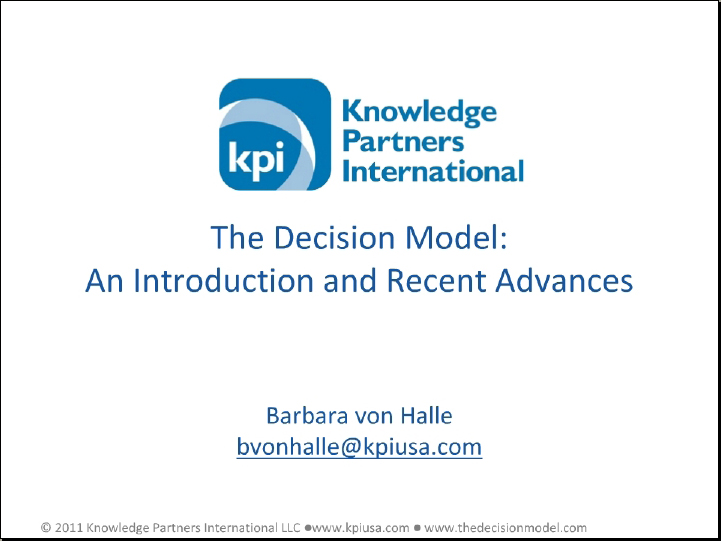
The Decision Model: Recent Advances
The Decision Model is a new Business Logic Framework that impacts not just technology trends but also business management practices.It brings to the world of business rules a well-defined structure based on the inherent nature of logic, extended with integrity and normalization principles. This is similar to the concept to what the relational model brings to the world of data.
Presenter Bio
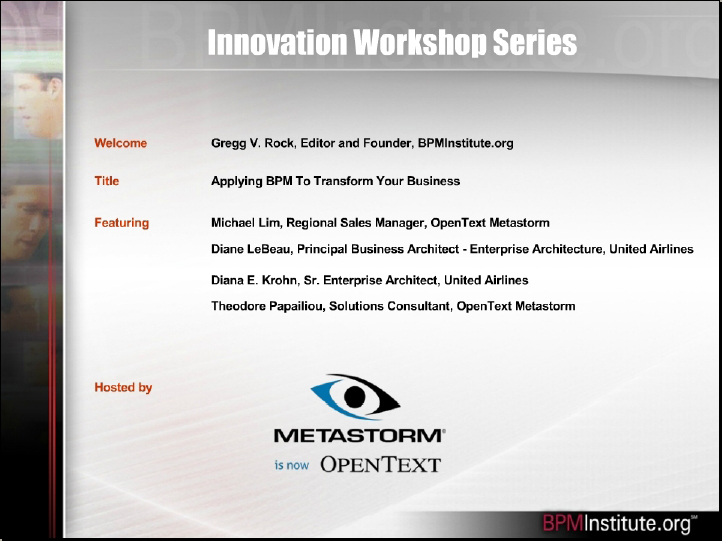
How BPM Enables Transformation: Part 2
See a demo of how upfront analysis maps the organization and processes and then optimizes them.
The presenter demonstrates the cycle of identifying the process, goals and strategies of the organization from the enterprise architecture perspective moving down into the business process analysis.
See a demo of how upfront analysis maps the organization and processes and then optimizes them.
BPM Project Best Practices
Learn how to align the promise of BPM with your current process initiatives. This will be an interactive workshop where participants share their past experiences in BPM and identify pitfalls and best practices. Additionally, participants will break out into team to develop BPM strategies based on use case scenarios.
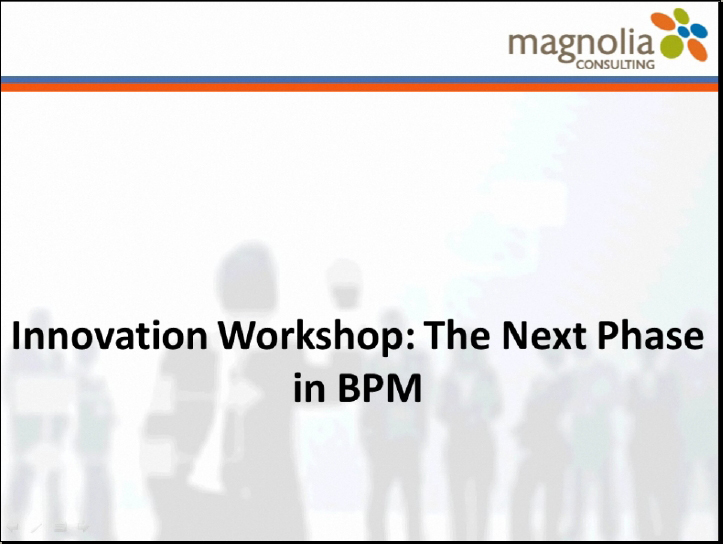
How To Make The BPM Promise A Reality
Learn how to align the promise of BPM with your current process initiatives. This will be an interactive workshop where participants share their past experiences in BPM and identify pitfalls and best practices. Additionally, participants will break out into team to develop BPM strategies based on use case scenarios.
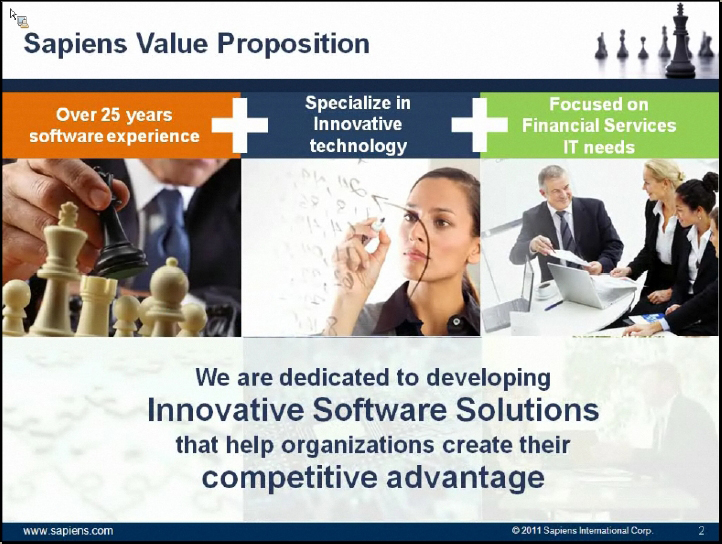
Business Decision Execution Environment
The Decision Model is a new Business Logic Framework that impacts not just technology trends but also business management practices. It brings to the world of business rules a well-defined structure based on the inherent nature of logic, extended with integrity and normalization principles. This is similar to the concept to what the relational model brings to the world of data.
Tomer Srulevich, VP Professional Services and Business Development, Americas at Sapiens
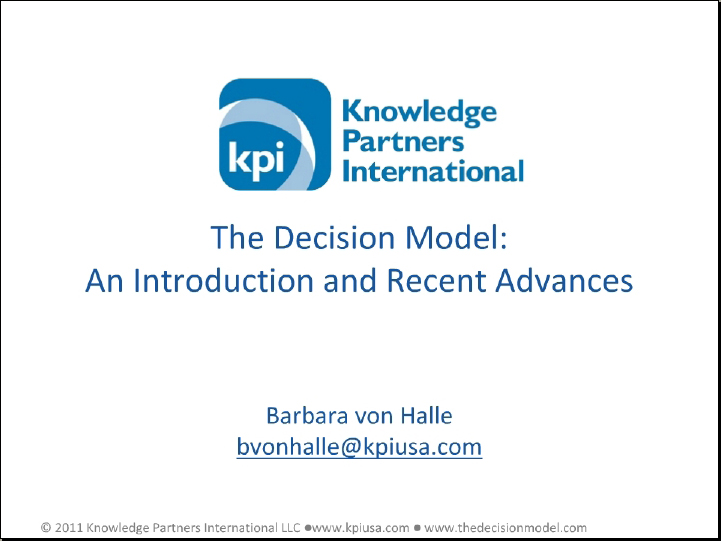
The Decision Model: An Introduction
Introduction to The Decision Model and its latest advances
The Decision Model is a new Business Logic Framework that impacts not just technology trends but also business management practices. It brings to the world of business rules a well-defined structure based on the inherent nature of logic, extended with integrity and normalization principles. This is similar to the concept to what the relational model brings to the world of data.
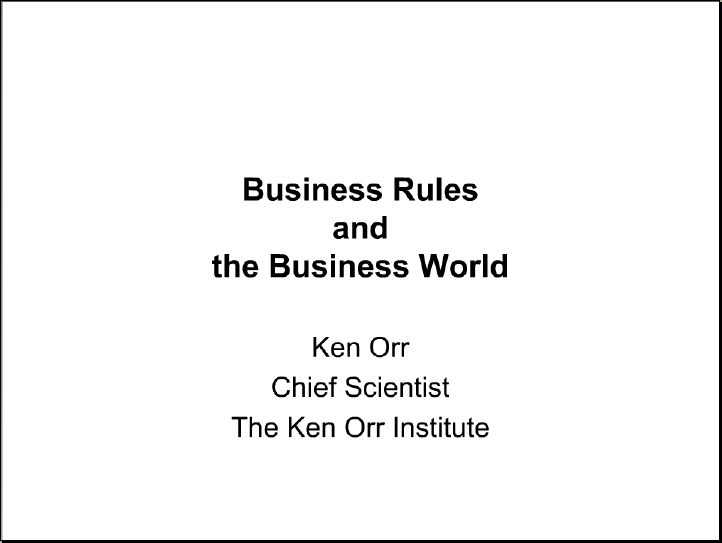
Business Rules and the Business World
The Decision Model is a new Business Logic Framework that impacts not just technology trends but also business management practices. It brings to the world of business rules a well-defined structure based on the inherent nature of logic, extended with integrity and normalization principles. This is similar to the concept to what the relational model brings to the world of data.
Presenter Bio
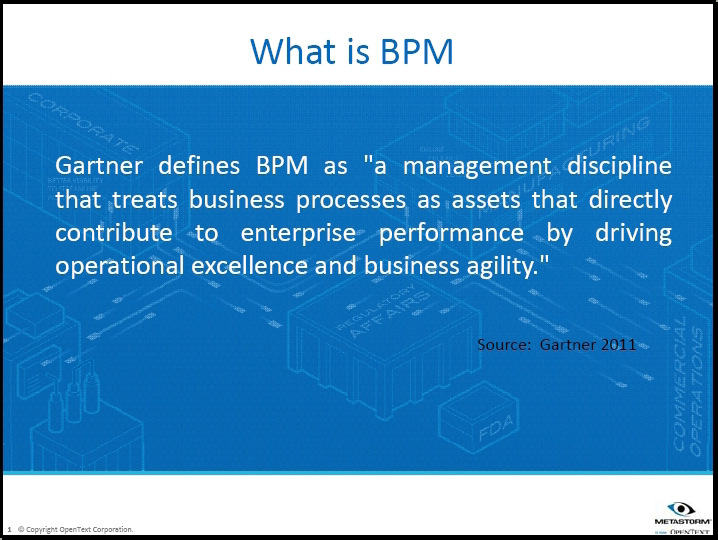
BPM Results and Key Success Factors
BPM can deliver levels of transparency, productivity and accountability across your business. To achieve this, you must start with understanding the actionable, practical and proven steps for process improvement success. People usually focus on individual projects when implementing BPM versus considering the entire enterprise.
BPM can deliver levels of transparency, productivity and accountability across your business. To achieve this, you must start with understanding the actionable, practical and proven steps for process improvement success.
People usually focus on individual projects when implementing BPM versus considering the entire enterprise. Focusing on the enterprise ensures assets can be leveraged outside of a single project.
The technologies, methodologies for adoption and real-world best practices from successful companies discussed in this workshop will leave you with a formula for BPM success to start the transformation at your company.
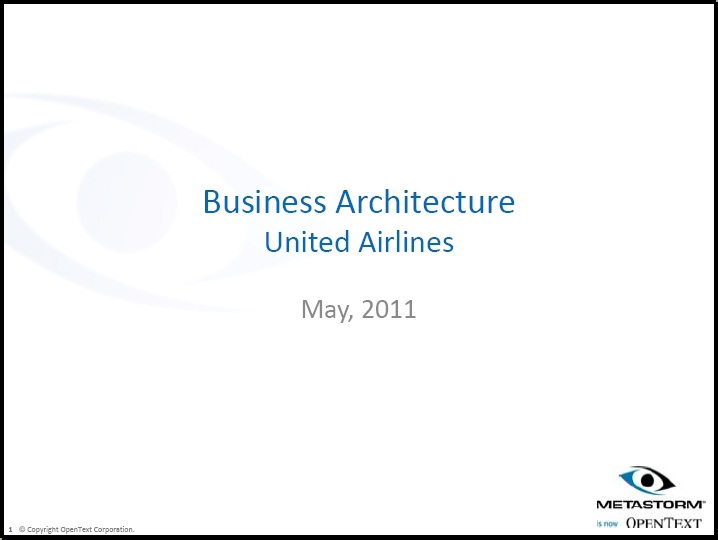
Case Study: United Airlines Lessons Learned in Transformation
United Airlines discusses initial challenges when you start a project and the things that the tool and methodologies do to make it work. Learn how and why United Airlines chose the tool and how United Airlines moved forward and integrated the tool to support its BA domain.
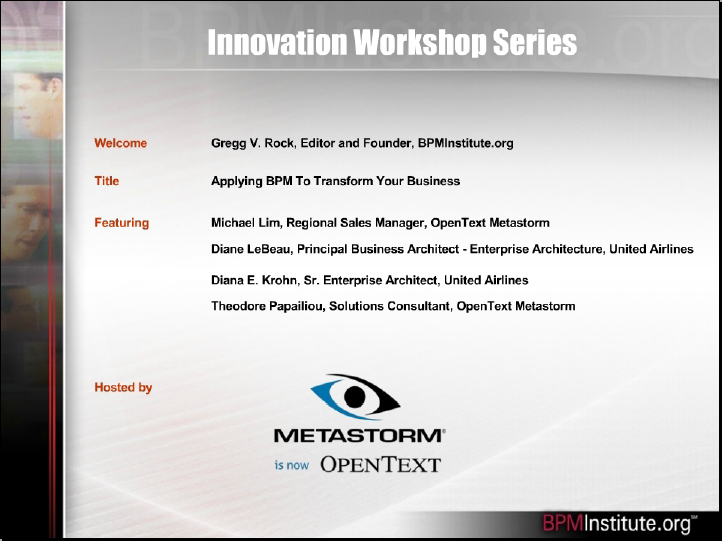
How BPM Enables Transformation
See a demo of how upfront analysis maps the organization and processes and then optimizes them.
The presenter demonstrates the cycle of identifying the process, goals and strategies of the organization from the enterprise architecture perspective moving down into the business process analysis. The key purpose is to identify which processes make sense to automate.
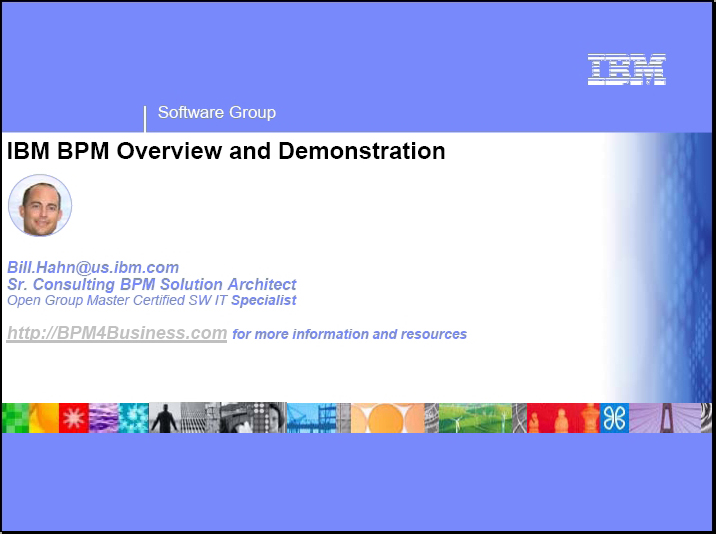
BPM In Action
See BPM in action from a discovery, implementation and optimization standpoint.
A core component of BPM is the ability to streamline and automate business processes, providing the flexibility required to compete in today’s complex and fast-paced environment. Process automation allows you to transform manual, disjointed activities into streamlined, repeatable ones with consistent results, saving you time and optimizes costs to make the most of your investments.
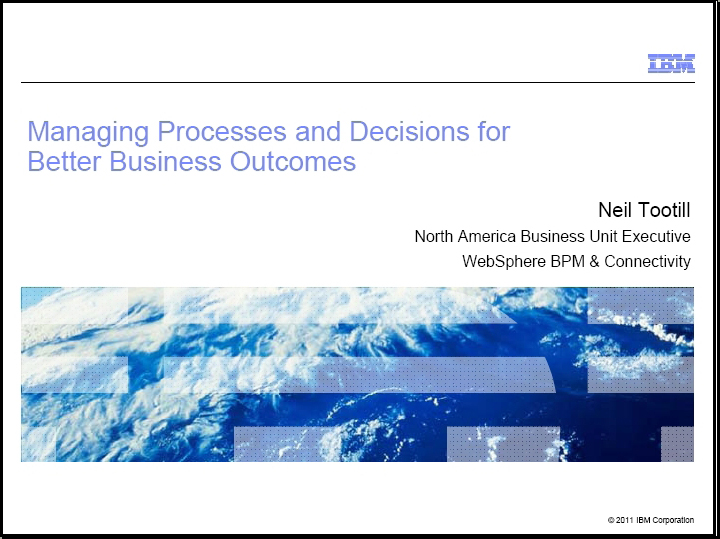
Visibility and Analytics for Continuous Process Improvement
Statistics and trends illustrate the perfect storm of ever-increasing complexities and IT challenges colliding with business goals and the need for increased agility. Neil features several use cases and success metrics.
Businesses are struggling to meet the challenges of today’s dynamic business network: rising customer expectations, rapid economic swings, and new global competitors require business agility to respond faster to change.
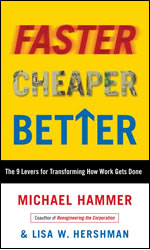
Faster Cheaper Better: The 9 Levers for Transforming How Work Gets Done
In Faster Cheaper Better Hammer and Hershman study both the successes and the failures of many companies—both what they had done and not done—to identify where they had run aground or what had made their efforts bear fruit. These in-depth case studies of Hammer and Company clients who used process methods include:

Balanced Approach to Process Metrics
As business process management understanding matures within organizations, new challenges will arise. Sometimes it helps to know how other disciplines have addressed similar issues as it avoids the “reinventing the wheel” syndrome. For the last decade forward thinking organizations have conducted reviews of their business processes and taken steps to streamline them, i.e., minimize the “handoffs” between business units. For publicly traded companies, Sarbanes-Oxley has increased the complexity of business processes and prevented the streamlining of certain processes.

A Business Executive’s View of Business Architecture
Business architecture is a game changing discipline that allows a business to establish a common vocabulary, shared vision, and level of transparency that facilitates initiatives ranging from mergers and acquisitions to deployment of new strategic business models. Even as business architecture success stories emerge, the message has been slow to penetrate the executive suite. This article discusses why business executives should strongly consider business architecture as a way of overcoming many of the complex obstacles inherent in today’s dynamic business environment.

Future with BPM: Cost Vs Benefits & Strategies
A Prominent factor of international business today is its strategic direction. Global firms are competing with a wider variety of business and operational strategies and with more complex operational strategies today compare to 12 years before.
This makes more challenging for global operation to deploy same model for its internal business where economic and market conditions are different. This can resolved by providing a unique national strategy and dedicated modification of key activities for each major country; this facilitates customizing the business around each countries market.
A global business and operational strategy world is considered as signal market where corporate goals are common. This brings international operations to tough spot of performing as stand-alone entity.













